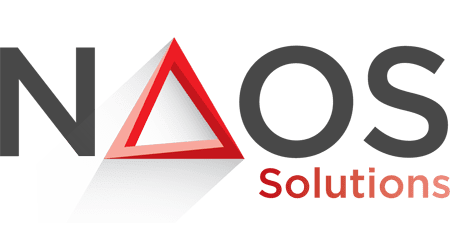You may already be delivering exceptional customer service, but as your business scales up, how do you ensure it remains so?
Do you invest in an in-house team that you can train and manage yourself? Or do you partner with an outsourced contact center that brings specialized expertise to the table?

The decision is more challenging than it looks.
In-house teams mean hands-on control while outsourcing by hiring a contact center offers greater flexibility. One move and you’d either scale your brand or cause customers to look elsewhere.
Below, we explore how you decide which path leads to customer loyalty gold.
KEY FACTORS TO CONSIDER BEFORE MAKING THE DECISION
96% of individuals say good customer service is critical in deciding where their loyalty lies. Therefore, you must weigh your options to make the right decision.
Here’s how you can decide which path to take to make your brand stand out for all the right reasons.
Scalability Needs
When it comes to handling fluctuating demand, outsourcing often takes the lead. Say you’re a growing business in the retail (e-commerce) or hospitality industry subject to significant seasonality.
While a loyal and skilled in-house team may effectively handle steady demand, it often struggles during peak periods when thousands of additional calls and chats flood in simultaneously. To prepare for these spikes, hiring and training temporary in-house staff can be lengthy, taking weeks and requiring significant resources.
Moreover, once the peak season ends, that same in-house team may be oversized, leading to underutilization of staff and unnecessary overhead costs. This imbalance can burden the business financially and operationally, as the team alternates between being overwhelmed during busy periods and underused for the rest of the year.

In contrast, an outsourced contact center can scale quickly and efficiently. Trained agents are ready to handle sudden surges in volume, maintaining high-quality service without missing a beat.
This agility ensures that customers experience minimal delays and that the brand’s reputation remains intact. Outsourcing provides a cost-effective solution to seamlessly manage both peak and off-peak seasons, ensuring resources are optimally aligned with demand.
Budget & Cost Management
Regarding budget, in-house and outsourced contact centers have two very different cost structures.
Setting up an in-house team means facing a range of upfront and ongoing expenses. This may include salaries, training programs, software, hardware, and the physical space needed to house your team.
Add in costs for ongoing development and technology upgrades, and suddenly, this option looks like a considerable long-term investment.
On the flip side, outsourcing often offers a more flexible cost structure. Many outsourcing providers will adjust their payment structure to what you need (customer support by the minute of inbound call or per the volume of emails answered, for example), which can be incredibly efficient for brands with fluctuating customer support demands.
Technical Requirements
Technical requirements—like CRM compatibility and data security protocols—can greatly affect the effectiveness of your customer service setup.
For an in-house team, this means investing in and constantly upgrading software and security measures to keep pace with industry standards. Unfortunately, maintaining this tech stack can be a costly commitment.
Outsourced contact centers often have advanced, ready-to-use systems that quickly integrate with popular CRMs and analytics tools.
Besides, they regularly update their systems to remain compatible with varying business systems, which is a plus.
Data Security and Compliance
Data security is non-negotiable, especially when customer information is involved.
However, securing an IT infrastructure requires investment in cybersecurity measures and ongoing training to keep staff up-to-date with evolving regulations. While this option gives you control, it also demands extensive resources to prevent vulnerabilities.
Outsourced providers, like NAOS CX, already have solid data security protocols. We adhere to stringent compliance requirements and continuously upgrade our systems to meet industry standards.

Our team prioritizes data encryption and multi-layered authentication to handle sensitive customer information with the highest level of security.
Plus, you can avoid the cost of building these protections from scratch.
WHEN TO HIRE A CONTACT CENTER
There are specific scenarios in which hiring a contact center is an intelligent decision for a brand.
Rapid Growth and Expansion Goals
When your business grows rapidly, everything moves fast – new products, expanding markets, a growing customer base, and more.
With all this momentum, your customer service needs to keep up. However, Developing an in-house team that expands alongside your growth can be a significant advantage for your business despite the challenges involved.
This is where outsourcing comes in handy.
Let’s say you’ve just launched a new product line, and you’re eyeing international markets for expansion. You’ll need customer support that can handle different time zones and speak multiple languages (something that would take months to recruit and train for an in-house team).
With an outsourced contact center, you can access a team with the skills and infrastructure to handle these demands. They can scale with you and tackle the inevitable customer queries that come with a growth spurt.
Access to Specialized Expertise
As your brand grows, handling customer inquiries inevitably becomes more complex. You may require solid technical support or multilingual assistance.
While in-house teams are often versatile, they can struggle to handle niche queries requiring deep industry knowledge.
So, instead of scrambling to find the right talent or training your in-house team to become experts in every corner of your business, outsourcing allows you to get help from specialists who are already experts in the areas you need.
This allows you to provide world-class service, even in highly specialized areas, without the burden of constantly upskilling or hiring niche experts in-house.

Budget-Conscious Solutions
Outsourcing offers a budget-conscious solution that’s often far more financially efficient than maintaining an in-house contact center.
So, instead of worrying about salaries, benefits, office space, equipment, and training for an entire team, outsourced contact centers often offer flexible pricing models that let you pay for only the support you need.
In fact, many providers operate on per-call or per-agent pricing, so you can scale up or down depending on demand without any surprise costs.
For instance, if you’re a small startup with limited resources but expect seasonal spikes in customer inquiries. In that case, outsourcing allows you to improve your support during those peak periods without committing to full-time hires.
This way, you won’t be left holding the bag when demand dips, which can be a real risk with in-house teams.
WHEN BUILDING AN IN-HOUSE CONTACT CENTER IS THE RIGHT CHOICE
While outsourcing is an appealing option for many businesses, there are times when building an in-house contact center is the better fit for your brand’s specific needs.
Direct Supervision and Quick Adjustments
When running a contact center, sometimes you need to be able to steer the ship in real time, and that’s where an in-house team can help.
The beauty of having direct oversight is the ability to make quick adjustments whenever the situation calls for it.
For example, let’s say your customer support agents handle an unusually high volume of returns during a sale. With an in-house team, you can quickly redistribute the workload or even alter the process on the fly to better accommodate the surge.
You won’t need to wait for an external partner to assess and implement changes. Instead, you can immediately guide your team back to your brand’s core values and vision.
Leveraging Existing Infrastructure and Talent
Building an in-house contact center can feel like a natural next step when your business has made substantial investments in technology or a skilled team.
If, for instance, you’ve already outfitted your company with state-of-the-art CRM systems or invested heavily in a sophisticated call-routing platform, you can leverage that infrastructure to its fullest potential.
Plus, you’ve already hired skilled individuals familiar with these technologies, meaning they’ll be able to hit the ground running without the steep learning curve that would come with an outsourced solution.

DETERMINING THE FINANCIAL BREAK-EVEN POINT
The “critical size” or threshold at which it becomes financially advantageous to keep customer service in-house rather than outsourcing depends on several factors, such as the volume of interactions, operational costs, and the business’s scalability needs.
While exact figures vary by industry and geography, here’s a general framework to evaluate this critical size:
- Interaction Volume:
- Outsourced Contact Centers: Often cost-effective for handling variable or lower interaction volumes due to shared resources.
- In-house teams become cost-competitive when the business consistently handles a high volume of calls, emails, or chats. Typically, if you need a team of 50 agents or more to handle the volume of your customers’ interactions, you may start to keep that activity in-house. This rough evaluation may vary significantly according to the complexity of the interactions, the agent skill level, the system efficiency, and the idle time the team may face between interactions.
- Cost of Staffing:
- Costs for an in-house team include salaries, benefits, hiring, and training. These scale linearly as interaction volume increases.
- Outsourcing providers use economies of scale, especially for businesses with fluctuating demands, making them cheaper at lower interaction levels or during seasonal spikes.
- Technology and Infrastructure:
- An in-house operation requires investments in CRM systems, telephony, workspace, and ongoing maintenance.
- If the interaction volume justifies these fixed costs and amortization over time, in-house setups become more financially viable.
- Labor Costs and Geography:
- For businesses in regions with high labor costs (e.g., North America or Western Europe), outsourcing to lower-cost regions remains financially attractive until interaction volumes justify hiring a large in-house team.
- Quality and Control Priorities:
- In industries where quality or personalized customer interactions are critical (e.g., luxury brands), businesses may choose to maintain in-house teams even if it’s not the most cost-effective solution.
General Critical Threshold Estimates:
- Small Business (0–75,000 interactions/month): Outsourcing is typically more cost-effective due to shared agent models and scalable pricing.
- Medium Business (75,000–125,000 interactions/month): Cost-benefit analysis should consider the break-even point where in-house costs (salaries, technology, and overhead) align with outsourcing costs. Some companies begin transitioning in-house here.
- Large Enterprises (125,000+ interactions/month): In-house solutions become increasingly viable due to economies of scale and the ability to leverage investments in infrastructure and technology over a higher volume.
EVALUATING HYBRID MODELS – THE BEST OF BOTH WORLDS
Hybrid models offer the best of both worlds, combining the strengths of in-house and outsourced customer service. Rather than committing entirely to one approach, a hybrid model enables businesses to allocate tasks strategically for maximum efficiency and customer satisfaction.
With this approach, your in-house team can focus on delivering high-touch, personalized customer interactions that reflect your brand’s voice and core values. These moments often require deep product knowledge or a unique customer service style.

Meanwhile, outsourced partners can manage specific functions to complement your internal team. For example:
- Overflow Platforms: These solutions step in during peak periods, like holiday sales or product launches, to handle the surge in customer inquiries. They ensure your customers receive prompt, high-quality service, even when demand spikes. To learn more about how overflow platforms work and their benefits, read this detailed guide: Overflow Platform for Customer Service.
- After-Hours Outsourcing: This service extends customer support availability beyond standard working hours, ensuring round-the-clock coverage. It allows your business to offer 24/7 support without the financial burden of maintaining a full-time, in-house night shift team.
Businesses can handle volume fluctuations and maintain consistent service quality by strategically outsourcing overflow and after-hours tasks. This model is also more cost-effective than managing a large in-house team. Outsourcing lower-level queries or routine interactions lets your internal team focus on high-priority, high-impact areas that drive customer loyalty and growth.
The hybrid model delivers flexibility, scalability, and efficiency while enabling your business to maintain control over its most critical customer touchpoints.
CONCLUSION
Choosing between outsourcing and hiring an in-house contact center is about finding the right fit.
In other words, your brand’s unique needs and growth trajectory should guide your decision. It’s less about the option that seems easier and more about the one that aligns with your values.
The good news is that there are solutions designed to make this process smoother. With a trusted partner like NAOS Solutions, you can get the expertise of an outsourced model while maintaining the control you desire.
Our specialized team offers tailored, scalable solutions and goes the extra mile to ensure your customers feel heard and supported.


One comment
Pingback: 3 Pillars of Contact Center Outsourcing | CX Blog
Comments are closed.